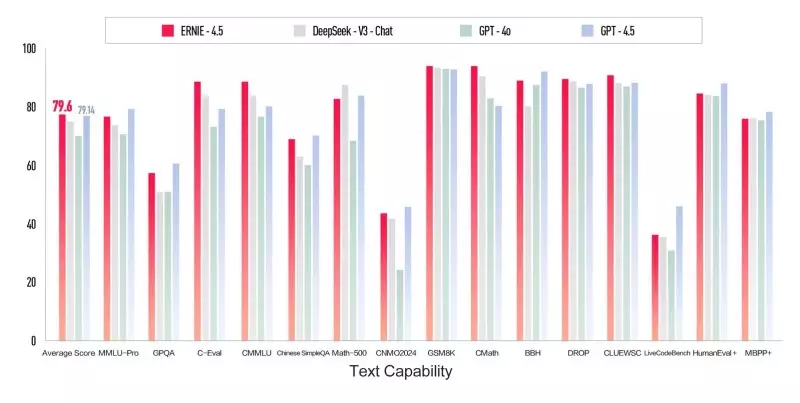In an exciting development over the past weekend, Baidu, the Chinese tech heavyweight, unveiled its latest advancements in artificial intelligence through the introduction of ERNIE 4.5 and ERNIE X1. These models are not just incremental improvements but are heralded as revolutionary solutions with state-of-the-art capabilities that promise to challenge existing giants like OpenAI’s GPT-4.5. The stark contrast in pricing and performance metrics suggests that Baidu is carving a significant niche in the AI landscape, targeting both mainstream applications and specialized sectors.
Competitive Edge: Performance and Cost Effectiveness
Baidu boldly claims that ERNIE 4.5 and ERNIE X1 outshine competitors such as DeepSeek’s V3 and OpenAI’s latest offerings across multiple benchmark tests. Notably, they have excelled in challenging environments, as highlighted by their performance in the C-Eval and CMMLU benchmarks—assessments that explore knowledge amplification and reasoning quality across expansive subject areas. The assertion that they can provide their features at a fraction of the cost (99% lower for ERNIE 4.5 when compared to GPT-4.5) is another critical component of Baidu’s strategy, making these models more appealing to organizations looking to leverage AI without incurring enormous expenses.
However, while these claims are impressive, skepticism lingers concerning the permanence of these advantages in real-world applications. The stated performance statistics must be carefully evaluated through rigorous testing to ascertain true reliability and usability. Ultimately, potential users should exercise caution until they can see these models in practical scenarios rather than solely relying on reported benchmarks.
Limitations in Context and Accessibility
Despite the ambitious launch, challenges are apparent. Notably, ERNIE models come with a significantly constricted context window—only 8,000 tokens compared to the remarkable 128,000 tokens of its counterpart, GPT-4.5. In an age focused on expansive context windows, this limitation raises questions regarding the models’ viability for various applications beyond basic customer support functions. User @claudeglass aptly pointed out that this restriction could restrict ERNIE models primarily to simpler tasks.
Furthermore, while Baidu has promised that the ERNIE 4.5 model family will switch to open-source licensing by June 30, 2025, the existing lack of open-source availability might limit developer trust and wider adoption in the AI community. The immediate implications of this decision necessitate a cautious approach from organizations keen on adaptability and transparency as they consider integrating these models into their workflows.
Multimodal Capabilities: A Future-Focused Approach
To its credit, Baidu has enriched the ERNIE models with multimodal capabilities that signify a leap toward a truly integrated AI experience—one that encompasses text, images, audio, and video dimensions. This positions ERNIE 4.5 as a formidable competitor in sectors seeking comprehensive AI solutions for varied tasks like content generation, customer interaction, and creative writing.
Moreover, the introduction of ERNIE X1 with advanced reasoning abilities opens up new possibilities for tasks such as complex documentation analysis and sophisticated query resolution. This presents an unprecedented opportunity for industries plagued by inefficient processes, further legitimizing the need for AI solutions that can deeply understand human queries and provide nuanced responses.
Integration and Strategic Positioning
Baidu’s strategic rollout indicates a willingness to integrate the ERNIE models within its ecosystem, such as Baidu Search and various business applications. For CIOs and IT leaders, this move represents a valuable opportunity to harness interactive tools for improved operational efficiencies. The prospect of automation through ERNIE X1’s toolset, which facilitates advanced searches and document-based inquiries, provides an undeniably attractive proposition in a tech-accelerated world.
However, enterprises must remain judicious about adopting these models, particularly in light of Baidu’s ecosystem being heavily optimized for Chinese-language processing. Organizations operating on a global scale should assess localization needs, compliance with data privacy regulations, and long-term strategic benefits before making the leap.
While Baidu’s introduction of ERNIE 4.5 and ERNIE X1 comes with ambitious goals and impressive claims, it also carries significant considerations that organizations must evaluate with care. As AI technology continues to evolve and mature, Baidu’s proactive attempt to push boundaries will undoubtedly shape discussions around the future of AI.

